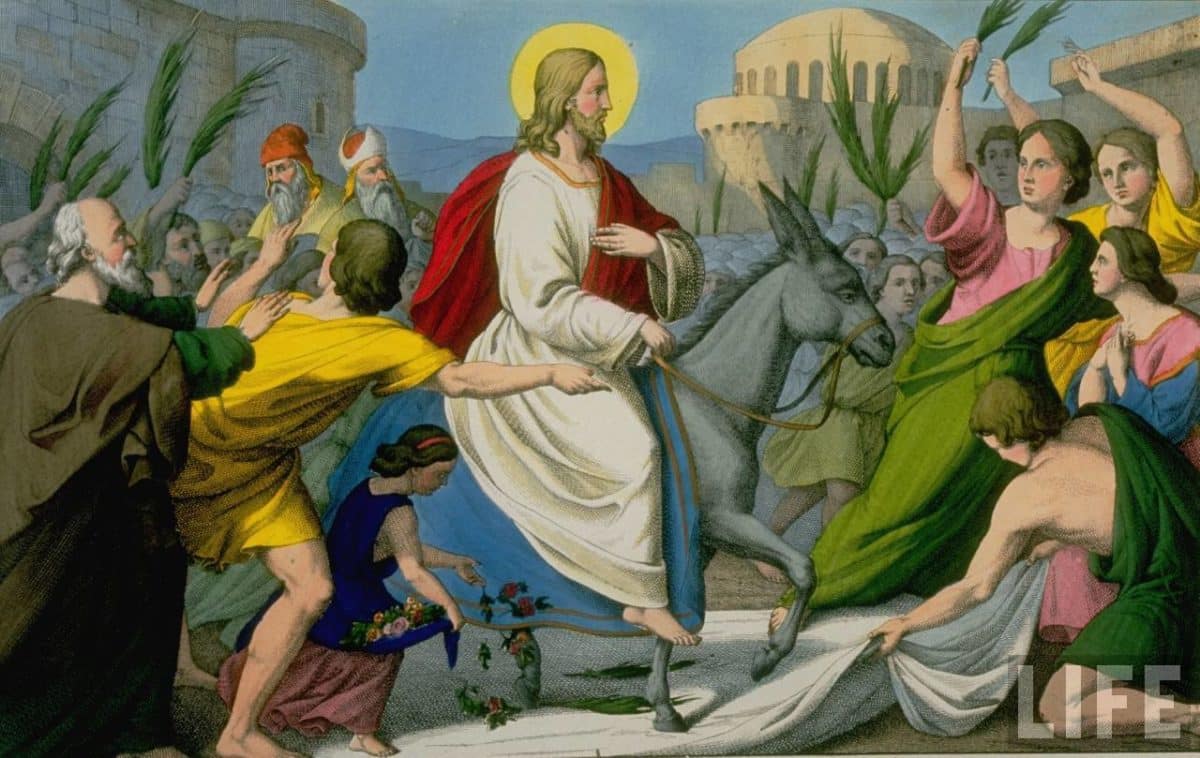How did Christ ride a Donkey AND a Colt (at the same time?)
For years I was confused by Saint Matthew’s description about Palm Sunday: we read that Christ rode a female donkey and her baby colt.
However, in Mark, Luke, and John, we read that Christ rode a donkey without any mention of the her colt. For some reason, I had imagined that Christ rode the she-donkey and the little colt at the same time – wide straddling both. This seems ridiculous, but I didn’t know how else to visualize what Matthew was describing.
I finally found clarity while reading Cornelius a Lapide’s commentary on the passage. According to Lapide, Christ first rode the ass up and down the mount and then transferred and rode the colt into the city.
There is a practical reason for this. The she-ass would be stronger and more able to go up and down the terrain. Next, the colt would be able to bring him into the city easily.
Yet there is a mystical signification is this as well. The she-ass and her colt signify “the two sorts of people of which the world is made up—the Jews, accustomed to the yoke of the Mosaic law, who were represented by the ass; and the Gentiles, living up to this time without the Law of God, and who were denoted by the colt.”
The she-ass represents Mother Israel who has been burdened with the Law of Moses. Saint Peter our first Pope described the Mosaic Law as “a yoke…which neither our fathers nor we have been able to bear” (Acts 15:10, D-R).
The young colt represents the new and untrained Gentiles – the wild olive branch that the Apostle describes as the Gentiles.
Christ our Lord rode both to signify that both the Jews and the Gentiles were called to be Christophoroi – Christ-bearers.
[reminder]Now it’s your turn: How did we carry “Christ to the world” in our age. What is the humble donkey or colt in our lives that communicates Christ’s Gospel to others? Please leave a comment.[/reminder]
Here’s Thomas Aquinas on why Christ rode a donkey on Palm Sunday.
Get Dr. Marshall’s book Thomas Aquinas in 50 Pages for free by clicking here.
What to Watch Next
SHOP THE TAYLOR MARSHALL STORE
Dive Deeper

GET CONFIDENT IN YOUR FAITH
Explore the fascinating world of Catholic teachings with Dr. Marshall. Together you’ll unpack the brilliant answers the Church gives to tough questions about the Faith. The best part: you go at your own pace. Start this exciting journey today.


 >
>



